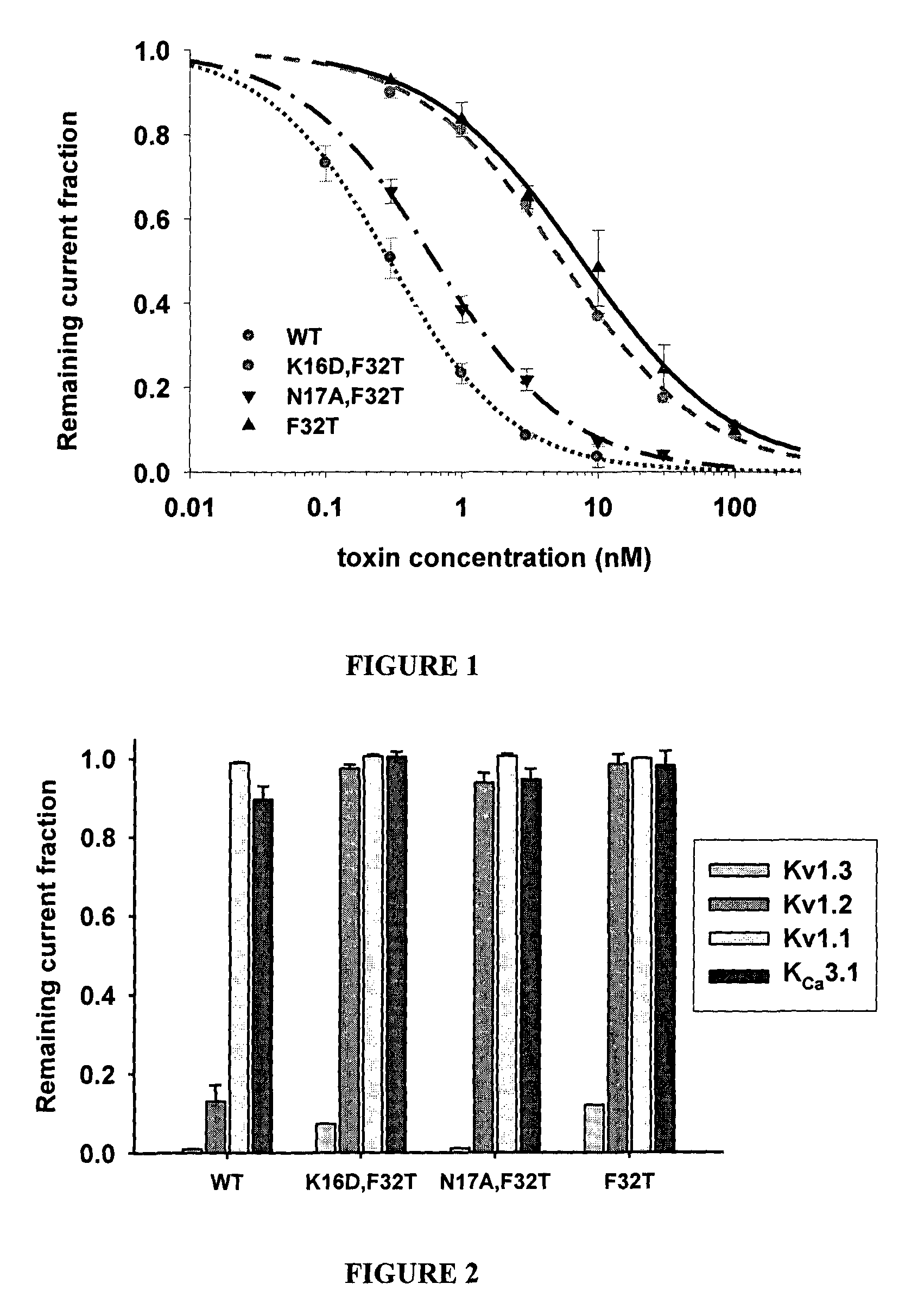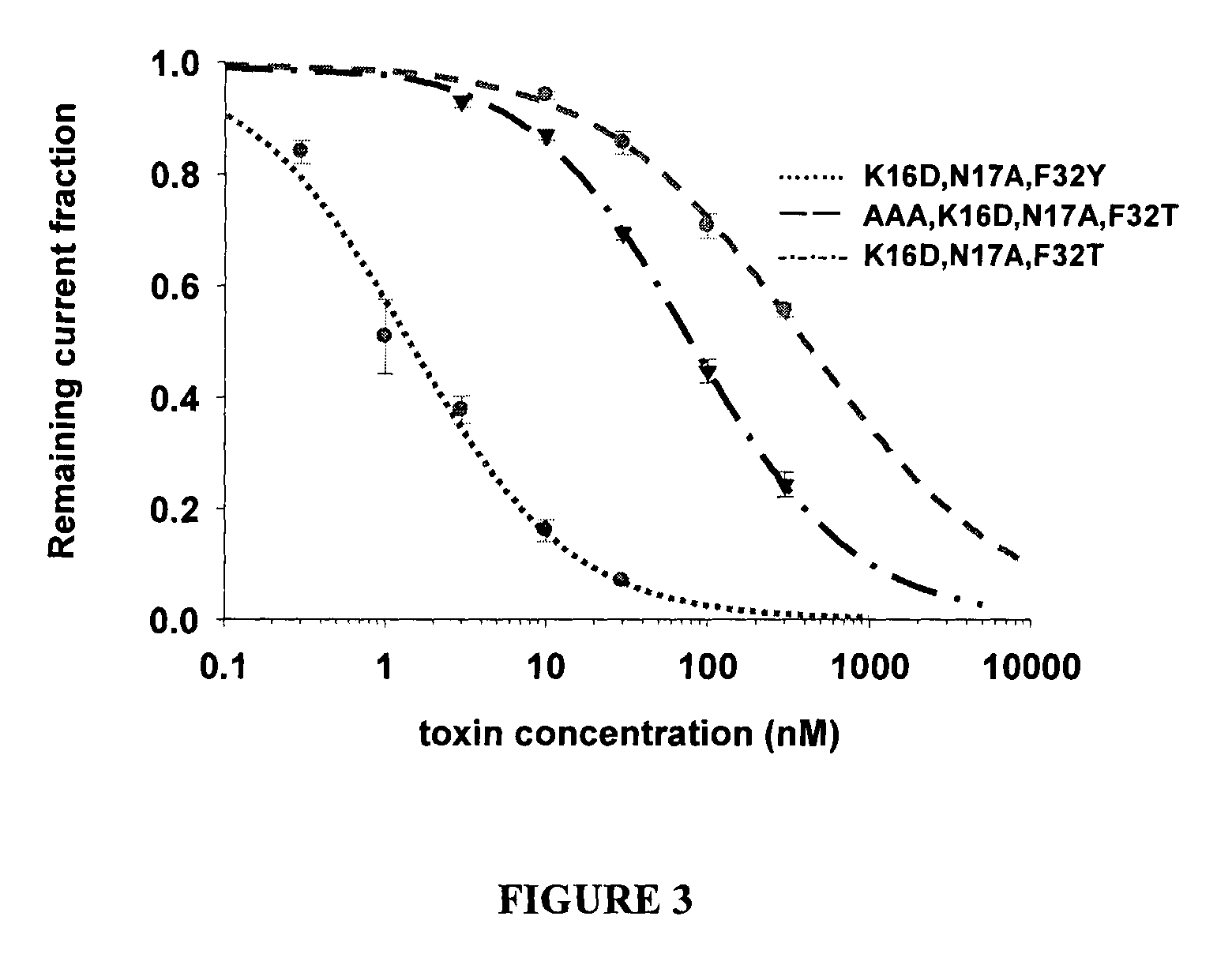Modified peptide toxins
a technology of peptides and toxins, applied in the field of modified peptide toxins, can solve the problems of affecting the affinity of binding, and provoking serious side effects, etc., and achieve the effect of reducing the affinity for kv1.3
- Summary
- Abstract
- Description
- Claims
- Application Information
AI Technical Summary
Benefits of technology
Problems solved by technology
Method used
Image
Examples
examples
1.3. Cells
[0088]1.3.1 Lymphocyte Separation
[0089]Kv1.3 currents were measured in human peripheral T lymphocytes. Heparinized human peripheral venous blood was obtained from healthy volunteers. Mononuclear cells were separated by Ficoll-Hypaque density gradient centrifugation. Collected cells were washed twice with Ca2+ and Mg2+ free Hank's solution containing 25 mM HEPES buffer (pH 7.4). Cells were cultured in a 5% CO2 incubator at 37° C. in 24 well culture plates in RPMI-1640 supplements with 10% FCS (Sigma-Aldrich, Hungary) 100 μg / ml penicillin, 100 μg / ml streptomycin and 2 mM L-glutamine at 0.5×106 / ml density for 3-4 days. The culture medium also contained 2.5 or 5 μg / ml of phytohemagglutinin A (PHA-P, Sigma-Aldrich Kft, Hungary) to increase K+ channel expression [Bagdany M, et al. Mol Pharmacol 2005; 67:1034-1044].
[0090]1.3.2 Heterologous Expression of Channels
[0091]Cos-7 cells were transiently transfected with the plasmid for hIKCa1 (subcloned into the pEGFP-C1 (Clontech) in fr...
PUM
| Property | Measurement | Unit |
|---|---|---|
| dissociation constant | aaaaa | aaaaa |
| dissociation constant | aaaaa | aaaaa |
| dissociation constant | aaaaa | aaaaa |
Abstract
Description
Claims
Application Information
 Login to View More
Login to View More - R&D
- Intellectual Property
- Life Sciences
- Materials
- Tech Scout
- Unparalleled Data Quality
- Higher Quality Content
- 60% Fewer Hallucinations
Browse by: Latest US Patents, China's latest patents, Technical Efficacy Thesaurus, Application Domain, Technology Topic, Popular Technical Reports.
© 2025 PatSnap. All rights reserved.Legal|Privacy policy|Modern Slavery Act Transparency Statement|Sitemap|About US| Contact US: help@patsnap.com



